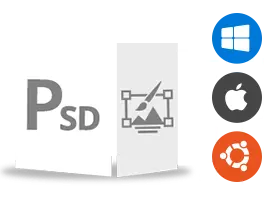The Denoise Image App Overview
The Denoise Image is an application that allows you to remove noise from PNG files without downloading any software on your device. Our app is designed to deniose PNG images and download the result in JPG format.
After denoising your PNG file, you can download it directly to your device as a JPG file.
One of the features of our Denoise Image is Photoshop®-like image processing that treats images as a layered PSD file.
Once you have added a PNG image for denoising, it will be converted to a PSD image using the original image as the background layer.
Saving the result in a JPG file format renders the raster file as if it was rendered in Photoshop® and then exported to a raster file format.
Why save PNG files as a JPG?
Although there are some similarities between PNG and JPG image formats, they differ in how they are stored and used.
Your files and the links stay available on our servers for 24 hours.
Both formats are popular and have a many similarities and differences. JPEG compresses large images into smaller files for sharing and uploading online. Lossy compression completely removes some data during resizing, so every time you edit and save some data is lost. PNG files use lossless compression, so no data is lost when the image is compressed. Editing or saving does not change the quality. JPG contain less data and are usually smaller in size. PNG supports transparent backgrounds.
PNG (Portable Network Graphics) files use lossless data compression to reduce the image to a usable size, which can be saved and opened from any browser. It was developed for transmitting images over the Internet. PNG supports palette images with 24-bit RGB or 32-bit RGBA colors, grayscale images, image transparency, and full-color RGB images without a palette.
JPEG (Joint Photographic Experts Group) is one of the most popular raster file formats for photographers and content makers. JPEG uses lossy compression (to keep JPEG files as small as possible by removing all colors that do not detract from the visual appearance of the image) and supports up to 24-bit color. JPEG files can represent 16.8 million colors and remain small compared to lossless formats. Smaller sizes open faster in most browsers without compromising quality. The faster your page loads, the faster you can access your content.
Nonetheless, the JPG format has drawbacks:
Lossy compression saves space but reduces quality for highly compressed images. Images with clean edges and lines will lose some sharpness due to compression.
Excessive data loss can lead to posterization (loss of smooth transitions between colors) making the image look blockier and unnatural, as well as to the appearance of some artifacts (blocky or blotchy areas on the image) making the image significantly degraded.
Our app is a virtual instrument powered by Aspose.PSD. All files are processed with Aspose APIs, which are used by many Fortune 100 companies across 114 countries. Our API in .NET or JAVA is useful for developers and comes with great documentation, clear code samples, and an all-dev support team.



